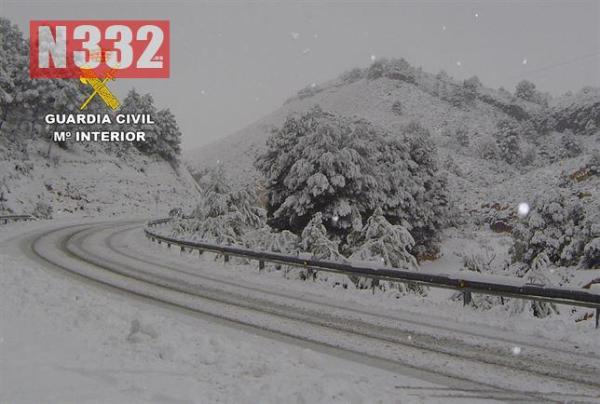With many people about to set off on a road trip taking them back to their homeland for the festive season, it is important to remember that during a long journey the weather conditions can change dramatically, and although it may be sunny and pleasant when you set off, all too quickly the scene can be one of cold, wintery, snowy conditions.
The first thing to do for any trip is to plan your journey. There are numerous websites where this can be done, and smartphones are often the first choice. In Spain, the DGT not only has a website where the road conditions can be checked live, which you can access through dgt.es, they also have a mobile phone application which you can install for free, just search DGT in the app or play store.
We want to talk about snow in this article, partly because it can cause tremendous problems on the road network, before, during and after a snowfall.
During your journey, if there is a risk that you will be driving in snow, you really need to consider purchasing snow chains for your vehicle.
Carrying snow chains is not a mandatory requirement, but in some areas, where snow covers the road, it becomes compulsory to use them, and so having them ready is advisable.
The Guardia Civil, police or other authorities responsible for the road can impose a restriction without warning, placing signs on the roads indicating that the use of snow chains compulsory, and if you don´t have them with you, you have just one option, to wait until the road has been cleared by a snowplough or naturally, until the restriction is lifted.
Failure to adhere to the mandatory use is not only extremely dangerous, you risk a fine. If you see the “cadenas obligatorias”, or variant thereof, you must stop driving if you don´t have snow chains on your vehicle.
It might also be wise to take additional equipment with you, such as warm blankets, emergency food and drink, and always advise somebody of your journey and route, as mobile phone signals are not always as reliable as we might hope.
Winter Driving Kit
- Cash: You never know when an unexpected expense will occur, especially in case of breakdown and, even if you have full insurance, there are always expenses.
- Jumper cables: Always useful to have in case you need a jump start, or a lesser prepared motorist does.
- Small shovel: You never know when you might need to dig yourself out. Not necessarily fully covered, but maybe just a wheel or two and it´s better than having to use your hands.
- Sandbag: Useful to help you gain traction on ice and get your car back on the road. The good news is that even a simple bag of cat litter can do the job, you don´t have to search specialist stores.
- Scraper or ice remover: Crucial for keeping the windows and lights clear of snow or ice. It is important not to create a “letterbox”, but to clear all the windows entirely.
- Torch: We are in winter with fewer daylight hours, so a torch is a must.
- Appropriate clothing and footwear: Necessary in case you have to get out of the car.
- Food and water: Always sensible to carry something to eat and drink in the case of being stranded. Water is also useful to refill the antifreeze tank in case of emergency.
Remember that gritters are often out covering the road surface during snow. They spread an adhesive cover over the road which also helps to melt the snow, but when it does, it can also lead to dirty windows and lights, and it is crucial you keep these clear and clean at all times, even if it means stopping to clear them. Number plates must also be kept clear and clean.
Remember too that if there is a risk of any unusual weather on your route it is likely to take you longer to reach your destination. If you have a ferry or train booked, it is a good idea to leave earlier than planned, allowing extra time for the journey, so as you don’t have to rush.






